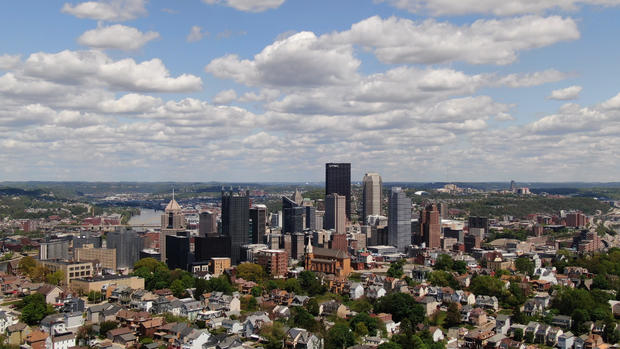Hey Ray: The movement of Pittsburgh's weather station
PITTSBURGH (KDKA) - Pittsburgh's weather record goes back more than 150 years. During that time, a lot of information has been gathered, but what can we gather from that information?
That really old data, though, is not necessarily the same as newer data. When it comes to comparing old data and old record-setting weather, you have to know exactly what you are comparing.
Information gathered in a city setting can have differences from information gathered in a rural or neighborhood setting.
Pittsburgh's official weather station has actually seen time in both locations.
So, to learn more about Pittsburgh's weather station, where it has been located, and what that means for the data, let's check in with Fred McMullen, a meteorologist with the National Weather Service's Pittsburgh office.
Ray: Fred, where has our weather station been placed over time?
Fred: So, the data point or the observations from Pittsburgh when the weather service would start out as the Weather Bureau came into origination was downtown. It was on it was downtown on Grant Street, and most of its time it was on top of the federal building down on Liberty where we took the observations.
That was, you know at the time, knowing what we knew about instruments that were close to the office, we could because we did monitor the stuff we were constantly watching the observations, and that way it was easy access to the k equipment which was really critical for us.
Ray: So, the instruments moved out to Moon Township before the office did?
Fred: Yeah. Then we moved out here. The official instruments moved when Pittsburgh International was built in 1952. Again, you know, of course, weather information with planes is very critical, so a lot of our observation sites move to airports. When the 80s came in, they decided to move the office out here, so we'd have everything close to the observation site. We'd be close to our radars, our technicians could fix it real quickly when it goes down, and so everything's kind of all integrated in one place.
Ray: It is nice to be in one place but the weather downtown and the weather near the airport can be a lot different.
Fred: So, when our office moved out here, the weather instrument moved to the airport when Greater Pittsburgh International opened up out here and Findley Township, you know, again it goes into different environments, right? It's pretty open, not a lot of trees, a lot of grass, and our office is on an old piece of farmland. When you have the instrumentation moved to it, that kind of environment versus being downtown surrounded by tall buildings, and then of course the pollution with the steel mills and peak production back in the early 1980s. There's definitely a change in elevation as well. We're a couple 100 feet higher, about 1300 feet here in Moon, and downtown's around eight to 900 feet, so you know those factors have to be taken into account, too.
Ray: So, those old records set downtown could be much harder to break out by the airport?
Fred: So one of the things that we always, always say is Pittsburgh has a long period of record, almost 150 years of weather observations between the airport, Allegheny County Airport, all the various locations downtown, and when Pittsburgh breaks a record, that's big, that's big news.
Ray: Should we pay more attention to single records or should we look at trends to draw conclusions?
Fred: Yeah, so the period of time of our hottest weather was in 1988. That's when we set our all-time high temperature, but some of you may remember the Dust Bowl in the 30s. That's when we said a lot of our record highs. If you look at the know that that time had the most record highs, it would have been the 1930s because the Dust Bowl. If you were around back in February 2015, that was our third coldest month on record. But again, it paled in comparison if you remember January 1977, which is our coldest month on record. The Ohio River froze, and you could actually walk across it at that point because so much ice was built up on it. So, those months, again, they were set up at the airport in 1977. And then in the 30s course, it was downtown. So there may have been fluctuations in temperatures. Technology and instrumentation change things, and the site of equipment now is really big, you know, especially in the last 60 years, to make sure we put equipment where it's somewhere it's representative. It's going to be a certain height. It can't be around trees. So, we have a lot of requirements in place when people set up weather instruments.
Thanks, Fred!
So it is very important to know what kind of data you are comparing, and know that the old, long-standing records are a big deal to break!







